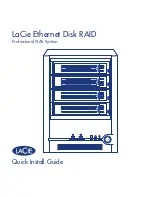
3-5
The matching criteria listed below must be unique in a traffic class with the operator being
AND
.
Therefore, even though you can define multiple
if-match
clauses for these matching criteria or input
multiple values for a
list
argument (such as the
8021p-list
argument) listed below in a traffic class,
avoid doing that. Otherwise, the QoS policy referencing the class cannot be applied to interfaces
successfully.
z
customer-dot1p
8021p-list
z
destination-mac
mac-address
z
dscp dscp-list
z
ip-precedence ip-precedence-list
z
service-dot1p 8021p-list
z
source-mac
mac-address
z
system-index index-value-list
To create multiple if-match clauses or specify multiple values for a list argument for any of the
matching criteria listed above, ensure that the operator of the class is
OR
.
Defining a Traffic Behavior
A traffic behavior is a set of QoS actions to take on a traffic class for purposes such as traffic filtering,
shaping, policing, priority marking. To define a traffic behavior, you must first create it and then
configure QoS actions such as priority marking and redirect in traffic behavior view.
Follow these steps to define a traffic behavior:
To do…
Use the command…
Remarks
Enter system view
system-view
—
Create a traffic behavior and enter
traffic behavior view
traffic behavior behavior-name
Required
Configure other actions in the
traffic behavior
See the subsequent sections depending on the purpose of the traffic
behavior: traffic policing, traffic filtering, traffic redirecting, priority
marking, traffic accounting and so on.
Defining a Policy
In a policy, you can define multiple class-behavior associations. A behavior is performed for the
associated class of packets. In this way, various QoS features can be implemented.
Follow these steps to associate a class with a behavior in a policy:
To do…
Use the command…
Remarks
Enter system view
system-view
—
Summary of Contents for H3C S7500E Series
Page 43: ...3 12...
















































